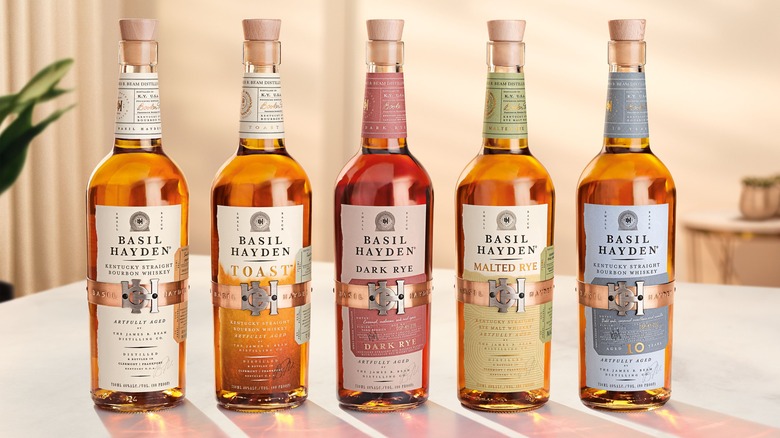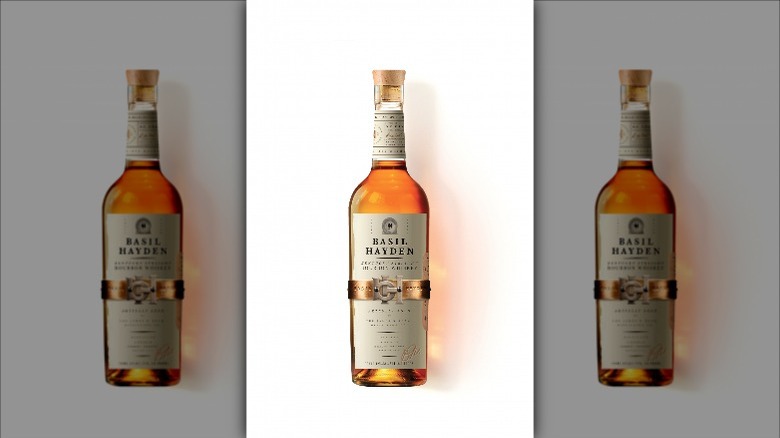The Farmer Who Inspired Basil Hayden's Iconic, Namesake Bourbon
Basil Hayden whiskey is an icon of the bourbon community. It's the whole package — complete with approachable flavor, beautiful packaging, and an elegant name. It's the name that we're going to talk about today. Contrary to popular belief, Basil Hayden is not a delicious herb — it's the nickname of Meredith Basil Hayden, Sr., an 18th-century rye farmer and whiskey pioneer. Hayden is known as the Father of High Rye Bourbon because in 1796 he changed his bourbon recipe to include a higher percentage of rye. This experiment birthed a brand new genre of whiskey: high-rye bourbon. Not only is Hayden credited as the inventor of high-rye bourbon, but he's also responsible for the 1785 founding of Bardstown, Kentucky. He led the group of 25 families which would first settle there. Bardstown is famous in the whiskey world, something you can gather from its title as the bourbon capital of the world.
Basil Hayden Straight Bourbon is a product of Jim Beam (now Beam Suntory) as one of four products in their Small Batch Bourbon Collection. It is the only high-rye bourbon in the group, and its name is an homage to the King of High Rye himself. Basil Hayden was first released in 1992 and has gone on to be a central pillar of the Jim Beam product line. It has inspired several different offshoots, including the Basil Hayden Dark Rye and Basil Hayden Toast. It is a low-proof bourbon, but that doesn't mean it's not high in quality.
What is a high-rye bourbon?
When we talk about high-rye bourbon, we're talking about the mash bill which is essentially the recipe for the whiskey. The four products in Jim Beam's Small Batch Bourbon Collection are a great example. Basil Hayden has a mash bill of 63% corn, 27% rye, and 10% malted barley. Whiskey is required to have at least 51% corn, but it's usually much higher than that. The other three products in the collection all share the same mash bill: 77% corn, 13% rye, and 10% malted barley.
As you can see, the rye content in the high-rye mash bill is over a quarter of the whole recipe which is cut in half for the low-rye mash bill. The difference between the two mash bills is quite stark. Corn is sweet, giving the whiskey a smoother edge. Rye, on the other hand, is spicy. It usually adds a lot of flavor and complexity to a whiskey, although some people find it to be too powerful of a flavor to be enjoyable. It's a matter of preference. There is another genre of whiskey called rye whiskey which requires the mash bill to contain at least 51% rye. A high-rye bourbon is still a bourbon whiskey, not a rye whiskey, but it strikes an even balance between the two.

